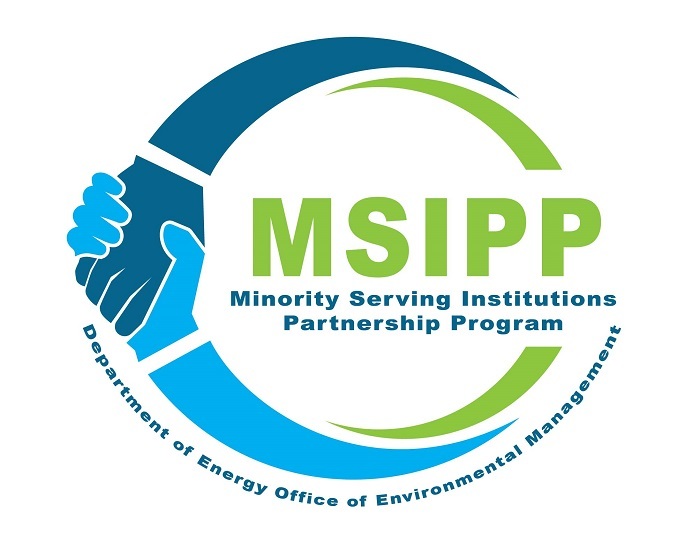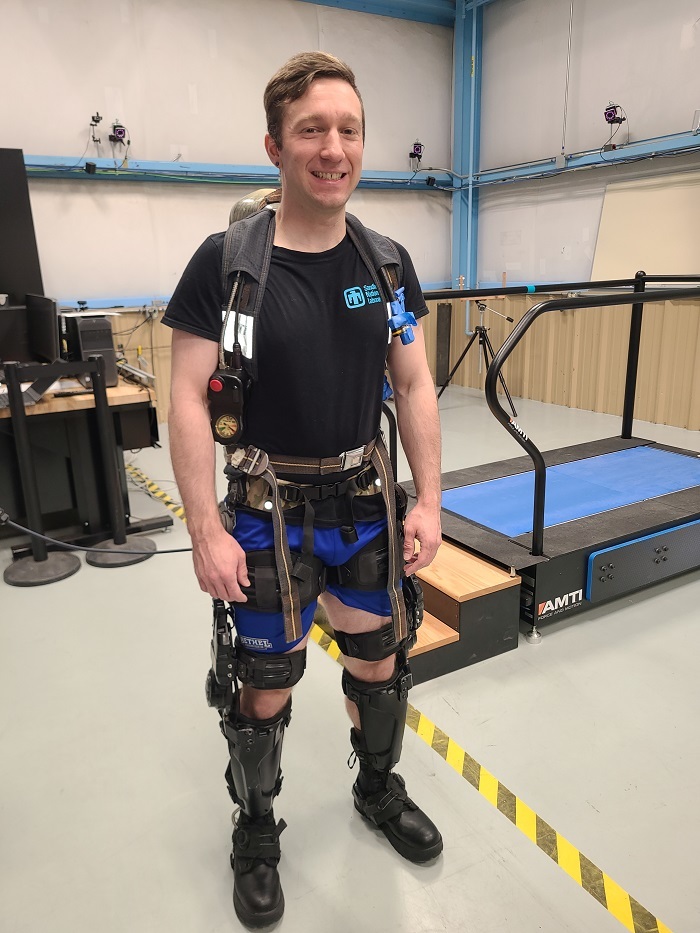 EM’s fiscal year (FY) 2023 budget request includes $56 million to expand its Minority Serving Institutions Partnership Program (MSIPP).
That funding request reflects EM’s strong commitment to advancing the nuclear cleanup mission by maintaining a well-trained, technically skilled and diverse workforce in science, technology, engineering and math (STEM) fields. EM received $56 million for the MSIPP in the FY 2022 budget, which built on the $6 million requested and provided in FY 2021.
"I am very proud of the EM Minority Serving Institutions Partnership Program,” said Nicole Nelson-Jean, EM’s associate principal deputy assistant secretary for field operations. “It is crucial for the EM program to have an experienced, educated and diverse workforce. Innovation can come from diverse perspectives and different backgrounds that recognize different needs and solutions. The MSIPP is a tool to help foster innovation to help meet the needs of the EM mission.”
Created in 2014, EM’s MSIPP originally included internships, competitive research awards, a post-doctoral research program and the Savannah River Environmental Sciences Field Station.
Last month, EM expanded the consortium’s program, adding a technology curriculum and professional development program, graduate fellowship program, and an EM/Minority Serving Institutions (MSIs) shared interest research partnership.
DOE’s Argonne, Idaho, Los Alamos, Oak Ridge, Pacific Northwest, and Savannah River national laboratories participate in EM’s MSIPP.
EM has a workforce of about 33,000 federal and contractor employees. A significant portion of that workforce is eligible, or will soon be eligible, for retirement. An infusion of new professionals in a variety of fields is needed to sustain and build the workforce, enabling EM to continue achieving key cleanup goals. MSIPP helps EM grow the next generation workforce by engaging the nation’s roughly 700 MSIs and their students.
A robust MSIPP is in the best interest of the U.S. More undergraduate STEM students are enrolled at four-year MSIs than at four-year non-MSIs, and the MSIs produce one-fifth of the nation’s STEM bachelor’s degrees. EM’s MSIPP recognizes the need to build on the national laboratories’ success in diversity, inclusion and equality, and expand a pipeline of future national laboratory scientists.
“The pace of innovation is accelerating globally, and with it the competition for scientific and technical talent. Minority representation in critical science and engineering fields has been and will be an important part of EM’s vision for its future workforce,” said Mary Kruger, EM deputy assistant secretary for resource management.
More than 100 research contracts involving more than 450 students in research projects have been granted under the program since 2014.
The FY 2023 budget request will strengthen the resources necessary to hire graduates into permanent positions at one of the six participating laboratories or within the EM complex.
Click here for information on EM’s Minority Serving Institutions Partnership Program.
-Contributors: Kim Kweder, Lee Tucker
EM's fiscal year (FY) 2023 budget request contains funds to continue developing technology to further improve worker safety, tank waste cleanup, soil and groundwater remediation, spent nuclear fuel operations, facility decommissioning and decontamination, and other work.
The $7.64 billion budget request includes about $25 million for EM’s Technology Development (TD) Program. The funding would support a wide range of cleanup areas and provide for such advancements as wearable robotic devices and confinement ventilation equipment. The TD Program budget would also support testing at various EM sites to evaluate innovative technologies to address high-priority needs.
“Technology development is a critical component of our Environmental Management mission. There are opportunities to enhance technology innovation to ensure our EM mission is a success,” said Nicole Nelson-Jean, EM associate principal deputy assistant secretary for field operations. “Our portfolio of technology development activities aims to improve worker safety. Potential technology investment areas include legacy tank waste disposition, remediation of soil and groundwater, facility decontamination and decommissioning, and the safe storage of spent nuclear fuel.”
 |
|
Nick Wright, a mechanical engineer with Sandia National Laboratories, participates in a study of wearable robotics for tank farm workers who carry self-contained breathing apparatus (SCBA) respirators. In addition to the SCBA oxygen tank, Wright is wearing a powered knee exoskeleton device. The study will help determine if exoskeleton devices reduce fatigue and injury in EM workers. |
 EM's fiscal year 2023 budget request would enable technical advancements, such as the continued development of autonomous ground vehicle radiation detection technology. Savannah River National Laboratory oversaw a demonstration recently of a new radiological inspection technology called iGART, pictured here. iGART is a ground-based robot that conducts radiological and nuclear inspection. EM used the demonstration at the Savannah River Site (SRS) to determine if there is an application value for iGART at SRS or other EM sites.
The proposed TD Program funding would allow EM to continue focusing on innovative solutions and state-of-the-art technology to reduce costs, accelerate schedules and protect human health and the environment.
The requested funding would enable technical advancements, such as the continued development of autonomous ground vehicle radiation detection technology that has enabled enhanced radiation monitoring, as well as survey applications.
The TD Program also provides technical assistance to EM cleanup sites. Technical subject matter experts are on hand from DOE’s national laboratories, academia, private industry and other federal agencies.
-Contributor: Keir-Kevin Curry
A whole-of-government effort to deliver at least 40% of the overall benefits from federal investments in climate and clean energy to disadvantaged communities is a top priority for EM in fiscal year 2023.
A requirement of President Biden’s Executive Order 14008, “Tackling the Climate Crisis at Home and Abroad,” the Justice40 Initiative builds on EM’s existing cleanup work. EM has been incorporating environmental justice efforts into its mission since the cleanup program’s inception in 1989.
EM has been interacting with stakeholders on Justice40 through presentations, conference calls, in-person and virtual meetings, panel sessions and workshops.
In July last year, the EM-Los Alamos Field Office (EM-LA) was selected as one of five DOE Justice40 Initiative Pilot Programs and has completed the required deliverables under the White House Office of Management and Budget (OMB) Justice40 Interim Guidance. EM-LA is conducting multiple stakeholder engagement meetings and “listening sessions” related to Justice40.
The focus of EM’s environmental cleanup work under Justice40 is soil and groundwater remediation.
Eight EM sites and two programs focused on community engagement grants and cooperative agreements fall under the EM Justice40 Initiative Covered Programs. A covered program is a federal government program that makes investment benefits in one or more of seven areas, according to Justice40 interim guidance. EM’s covered program is remediation and reduction of legacy pollution. The eight EM sites are the Hanford Site in Washington state, Idaho National Laboratory Site, Lawrence Livermore National Laboratory in California, Los Alamos National Laboratory in New Mexico, Moab Uranium Mill Tailings Remedial Action Project in Utah, Nevada National Security Site, Savannah River Site in South Carolina and Sandia National Laboratory in New Mexico.
OMB will issue further guidance to agencies on next steps for the Justice40 Initiative. A climate and economic justice screening tool and environmental justice scorecard will also be released.
-Contributors: Stephanie Gallagher, Patrick Hefflinger
|